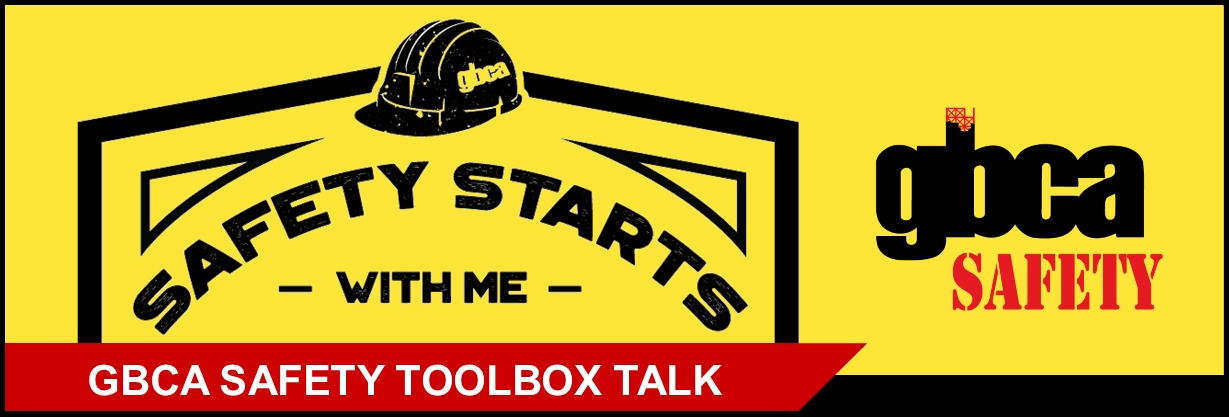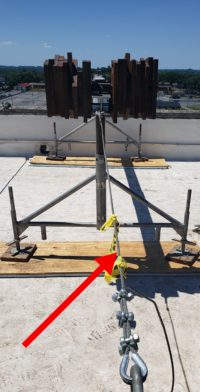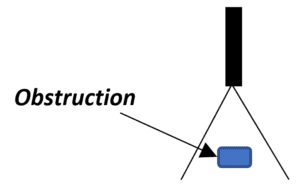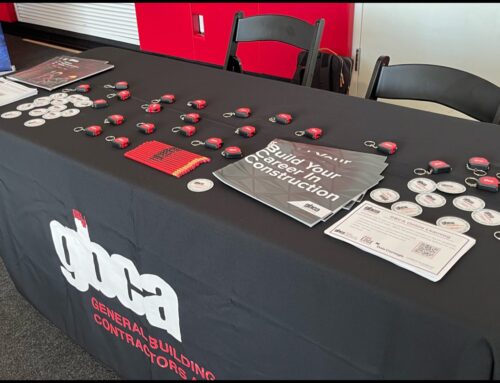This GBCA Safety Toolbox Talk discusses the requirements for anchoring a two-point swing stage scaffold. Click below to download the Toolbox Talk as a handout (includes Sign-In Sheet).
Two-Point (Swing Stage) Scaffolds – Anchorage
Two-point adjustable suspension scaffolds, also known as swing-stage scaffolds, are a more commonly used type of suspended scaffold. Hung by ropes or cables connected to stirrups at each end of the platform, they are typically used by window washers on skyscrapers, but play a prominent role in high-rise construction as well. Their use requires specialized training and equipment. Below are requirements for anchoring a two-point swing stage scaffold.
Anchorage
The safe use of a suspended scaffold begins with secure anchorage. The weight of the scaffold and its occupants must be supported by both the structure to which it is attached and by each of the scaffold components that make up the anchorage system.
Tiebacks
Tiebacks must be secured to a structurally sound anchorage on the building or structure, which may include structural members, but not vents, electrical conduit, or standpipes and other piping systems. [29 CFR 1926.451(d)(3)(ix)]

Outrigger beams with tiebacks and counterweights
Tiebacks must be installed perpendicular to the face of the building or structure or opposing angle tiebacks must be installed. Single tiebacks
installed at an angle are prohibited. [29 CFR 1926.451(d)(3)(x)]
Example of tieback that is perpendicular to the face of the building.
Tiebacks must be equivalent in strength to the suspension ropes and hoisting rope. [29 CFR 1926.451(d)(3)(vii) and 29 CFR 1926.451(d)(5)(iv)]
Example of tieback at opposing angles.
Counterweights
Suspended scaffold outrigger beams must be stabilized to the floor or deck by either of the following [29 CFR 1926.451(d)(3)]:
- Counterweights, OR
- Bolts or other direct connections to the floor or deck.
Counterweights used to balance adjustable suspension scaffolds must be capable of resisting one of the following [29 CFR 1926.451(a)(2)]:
- At least 4 times the tipping moment imposed by the scaffold when it is operating at the rated load of the hoist. OR
- A minimum of 1½ times the tipping moment imposed by the scaffold when it is operating at the stall load of the hoist, whichever is greater.
Counterweights on outrigger beam.
Only items specifically designed as counterweights may be used to counterweight scaffold systems. [29 CFR 1926.451(d)(3)(iii)]
Masonry units, rolls of roofing felt, and other similar construction materials shall NOT be used as counterweights. [29 CFR 1926.451(d)(3)(iii)]
Counterweights must NOT be made of flowable materials such as sand, gravel, and similar materials that can be easily dislocated. [29 CFR 1926.451(d)(3)(ii)]
Counterweights must be secured by mechanical means to the outrigger beams (Figures 2 & 3) to prevent accidental displacement. [29 CFR 1926.451(d)(3)(iv)]
Counterweights must NOT be removed from an outrigger beam until the scaffold is disassembled. [29 CFR 1926.451(d)(3)(v)]
Direct Connections
Suspended scaffold outrigger beams must be stabilized by [29 CFR 1926.451(d)(3)]:
- Bolts or other direct connections to the floor or deck, OR
- Counterweights
Direct connections to roofs and floors must be capable of resisting [29 CFR 1926.451(a)(2)]:
- At least 4 times the tipping moment imposed by the scaffold when it is operating at the rated load of the hoist, OR
- A minimum of 1½ times the tipping moment imposed by the scaffold when it is operating at the stall load of the hoist, whichever is greater.
Remember to record the attendees of your toolbox talk!
Access more toolbox talks:








